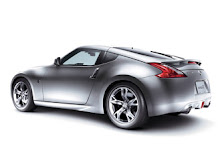HIJAB FOR WOMEN
Question:
Why does Islam degrade women by keeping them behind the veil?
Answer:
- The status of women in Islam is often the target of attacks in the secular media.
- The hijab or the Islamic dress is cited by many as an example of the subjugation of women under Islamic Law. Before we analyze the reasoning behind the religious mandate of ‘hijab’, let us first study the status of women in society before the advent of Islam.
In the past women were degraded and used as an objects of lust (nafsu).
The following example from history illustrate the act that the status of women in earlier civilization was very low to the extent that they were denied basic human dignity:
1) Babylonian Civilization:
Women were degraded and were denied all rights under the Babylonian law. If a man murdered another woman/man, instead of him being punished, his wife was put to ddeath.
2) Greek Civilization:
Greek Civilization was considered the most glorious of all ancient civilizations. Under this very glorious system, women were disadvantaged of all rights and were looked down upon. In Greek mythology, an’imaginary woman’ called ‘Pandota’ is the root cause of misfortune of human beings. The Greek considered women to be subhuman and inferior to men. Though chastity of women was precious, and women were held in high esteem, the Greek were later overwhelmed by ego and sexual perversion. Prostitution became a regular practice amongst all classes of Greek society.
3) Roman Civilization:
When Roman Civilization was at the zenith of it’s ‘glory’, a man even had the right to take the life of his wife. Prostitution and nudity were common amongst the Romans.
4) Egyptian Civilization:
The Egyptian (pre-Islam) considered women evil and as the sign of the devil.
5) Pre-Islamic Arabia :
Before Islam spread in Arabia , the Arabs looked down upon women and very often when a female child was born, she was buried alive.
Islam uplifted the status of women and granted their rights 1 400 years ago. Islam expects women to maintain their status.
Hijab for men
people usually only discuss ‘hijab’ in the context of women. However, in the glorious Qur’an Allah (swt) first mentions ‘hijab’ for men before ‘hijab’ for the women. The Qur’an mentions in Surah An-Noor:
“Say to believing men that they should lower their gaze (stare) and guard their modesty (humility): that they will make for greater purity for them: and Allah is well acquainted with all that they do.”
[An-Noor 24:30]
The moment a man looks at a woman and if any brazen or unashamed thought comes to his mind, he should lower his gaze.
Hijab for women
The next verse of Surah An-Noor, says:
“ And say to the believing women that they should lower their gaze and guard their modesty; that they should not display their beauty and ornaments except what must ordinarily) appear thereof that they should draw veils over their bosoms and not display their beauty except to theirs husbands, their fathers, their husbands’ fathers, their sons…..”
[An-Noor 24:31]
- six criteria for Hijab.
According to Qur’an and Sunnah there are basically six criteria for observing hijab:
I. Extent:
The first criterion is the extent of the body that should be covered. This is different from men and women. The extent of covering obligatory on the male is to cover the body at least from the navel to the knees. For women, the extent of covering obligatory is to cover the complete body except the face and hands up to the wrist. If they wish to, they can cover even these parts of the body. Some scholars of Islam insist that the face and the hands are part of the obligatory extent of ‘hijab’.
All the remaining five criteria are the same for men and women.
II. The clothes worn should be loose and should not reveal the figure.
III. The clothes worn should not be transparent such that one can see through them.
IV. The clothes worn should not be so glamorous as to attract the opposite sex.
V. The clothes worn should not resemble those of the opposite sex.
VI. The clothes worn should not resemble those of the unbeliever i.e. they should not wear clothes that have special identity or symbols of the unbelievers religions.



